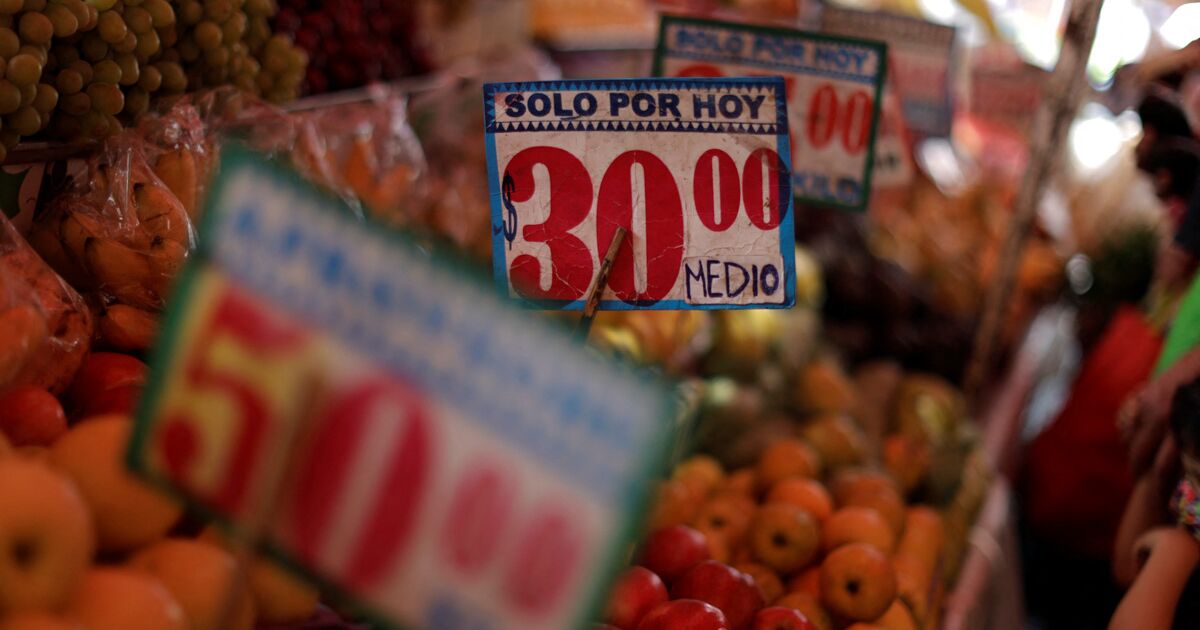The national consumer price index (INPC) stood at 8.16% at an annual rate in the first half of July 2022, a figure not seen since January 2001, according to information published by Inegi.
This price increase is not due to internal factors, but is due to aspects such as the closure of activities that was carried out to stop the spread of Covid-19, as well as the disruption in supply chains and the lack of goods. intermediates, such as semiconductors, necessary in industries such as the automotive industry; in addition to the increase in the price of energy and grains such as corn and wheat. The latter, because of the war between Russia and Ukraine.
Here are five essential questions and answers about inflation and its impact on your pocket.
1. What is inflation?
Inflation is defined as the general increase in the prices of a series of goods and services that are representative of the economy of a country, between one period and another, according to BBVA.
The increase of a single good or service is not considered as inflation. Prices respond to movements in supply and demand for each product or service, explained Gabriela Siller, director of economic-financial analysis at Banco Base.
For example, when a product like avocado is more abundant in the market, its price goes down, if, on the contrary, it is scarce, it becomes more expensive.
Another reason inflation rises is because of an increase in the amount of money in circulation. This generates that people have more money to spend, which translates into a greater demand for products. If the quantity of goods and services in the market is the same, prices will continue to rise, since the quantity supplied does not increase at a rate that allows it to satisfy demand.
2. How many types of inflation are there?
To better measure inflation, it is divided into two indices, the core and the non-core.
Core inflation measures the behavior of goods and services whose prices respond to market conditions -supply and demand-, and are not due to aspects of an administrative nature, seasonality or high volatility. This index allows for a more stable measurement of price behavior.
The non-core component is made up of unprocessed food, energy and tariffs authorized by the government, that is, products that are affected by climate issues or by government regulations, according to information from Inegi.
3. How is inflation calculated?
In Mexico, inflation is calculated every fortnight, and is compared with the previous fortnight; with the previous month and annually.
Banco de México has an inflation target of 3% +/- one percentage point.
To measure inflation, it is done with respect to a base year, which generates a bias or estimation error, which is greater for emerging economies, so that large economies have goals of around 2%, such as the United States, while that for Mexico the objective is 3%, added the Banco Base economist.
The Inegi takes into account about 235,000 products each month, divided into 283 generic concepts that make up the representative basket of goods and services consumed by Mexicans, in 46 cities in the country, according to the Banxico educa site.
4. Consequences of inflation
The increase in the price of products and services implies the loss of the purchasing power of money, that is to say that 100 pesos will be enough to buy more goods and services today than in a year.
Inflation is defined by economists and analysts as a tax that everyone has to pay. However, the impact is greater on people with lower incomes.
The effect will also depend on the consumption habits of each person or family, from diet to preferred brands and places to purchase goods and services, explained Banxico Educa.
To avoid the loss of purchasing power of the currency, the central banks of each country take monetary policy measures to keep the behavior of prices stable.
Increasing the interest rate causes credits to become more expensive and, with it, a slowdown in consumption.
To protect money from inflation, specialists recommend investing in instruments that offer higher yields, or equal to, the INPC, otherwise, you will see how each time you reach for less. To the profit offered by the different options in which you can put your money to work, you have to discount inflation to know the real yield.








